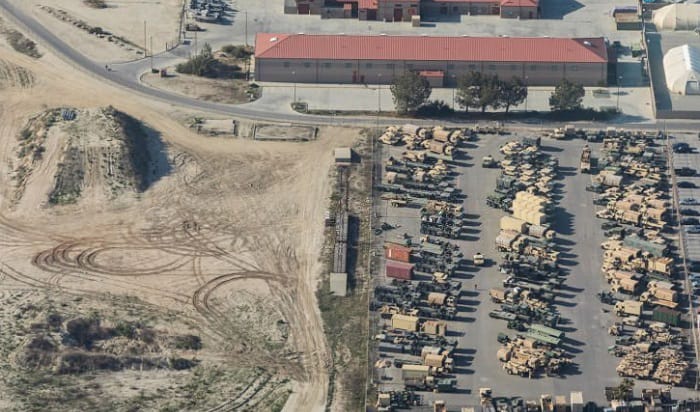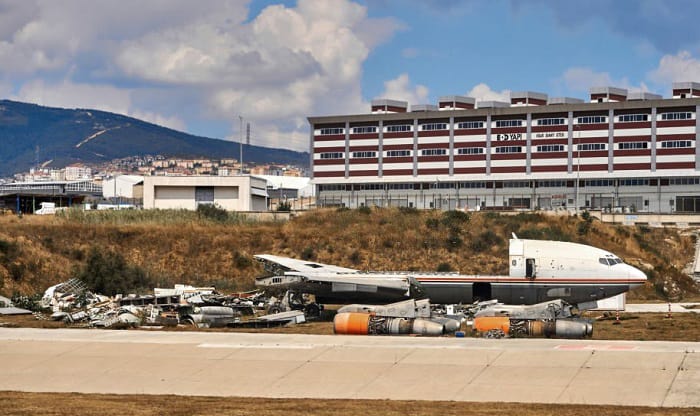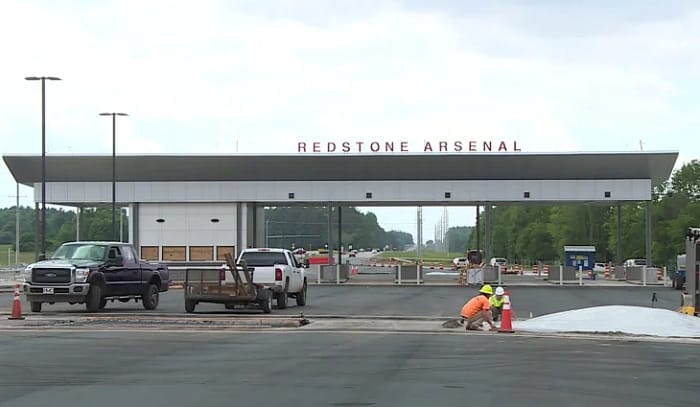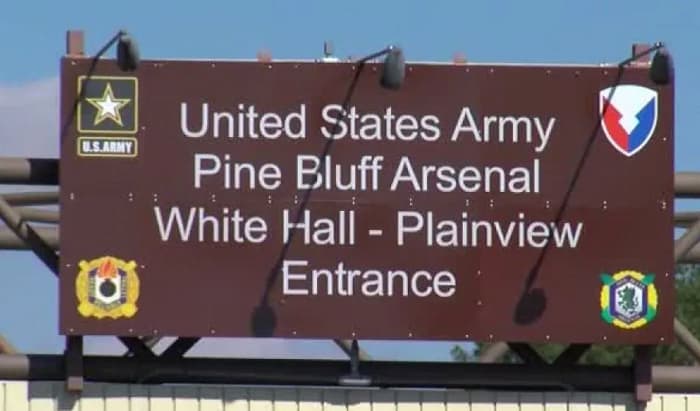U.S Military bases can span hundreds of thousands of acres. If you look up photos of U.S military bases, you will likely get results of what it looks like from the outside. But then, you may be curious about what it is like inside a military base.
Therefore, questions like “What buildings are in a military base?” and “What is the typical military base layout?” are inevitable. Knowing this, we have put together this article.
Generally, military bases include facilities and supplies that support military activities and logistics. But there are many types of military bases and their insides vary. The military building types also depend on the size of the base.
Table of Contents
Types of Military Bases – By Service Branch
All of the U.S service branches have bases. Collectively, they can be called “bases,” but they also have their own names, as follows:
- A base can be called a camp, station, or fort under the Army jurisdiction
- A base can be called an airfield, airbase, or field under the Air Force jurisdiction
- A base can be called a naval base, naval station, naval dockyard, shipyard, or yard under the Navy jurisdiction
Bases that are used by multiple branch services are named joint bases. The U.S military has more than 10 of them.
Types of Military Bases – By Purpose
1. Air fields
This is the military version of an aerodrome. It has some of the same facilities as civilian airports. But it also has military-specific facilities, such as hardened shelters, underground hangars, and revetments. In addition, there are subtypes of airfields:
- Dispersal Airfields: These disperse air units during a conflict. They can be in various forms, like highway strips, converted civilian airports, or auxiliary fields.
- Road Airfields: These are highways that are modified to serve as auxiliary bases during a conflict.
2. Arsenal
This is where ammunition and arms are made, maintained, stored, or issued (or any mentioned combinations). It is usually split into subdivisions, like construction, storekeeping, and administration.
- Storekeeping Subdivision: Include departments and stores.
- Construction subdivision: Include factories or workshops. You may find factories for guns, small arms, carriages, harnesses, gunpowder, etc.
- Administration: Include offices for chief directors, officials, officers, foremen, laborers, etc.
3. Barracks
This is where military members reside. It is also commonly referred to as military accommodation. They are usually occupied by unmarried enlisted members.
4. Depot
This is where military members store battlefield equipment and supplies temporarily. It is usually near or on the front lines, so the equipment and supplies can be easily and quickly distributed.
5. Fortification
This is for territory defense during wartime and a marker of established rule during peacetime. Often, it is just called a “fort.” But “fort” can also refer to other permanent military facilities with specializations.
6. Port
This is where warships and other military watercraft are docked. Here, they may be restocked or repaired as well. Simply put, docks are watercrafts’ temporary homes. Similar to ports are shipyards.
7. Proving Ground
This is where weapons and other military technology, such as vehicle prototypes, are tested. There are up to 10 proving grounds in the U.S military.
An example is Yuma Proving Ground in Yuma, Arizona.
8. Main Operating Base
This is a manned and well-protected place that supports permanently deployed military members. It has sea and air access and is considered a major strategic installation.
9. Forward Operating Base
This is a base that supports the tactical objectives and strategic goals of an operational-level position. It can but does not always contain a hospital, airfield, or other logistical buildings. Originally, it served as a “backup” for main operating bases.
It is visually characterized by a ring of barbed fire around the base and a fortified entry point, and other force protection infrastructure, like concrete barriers, watchtowers, earthen dams, bunkers, etc.
The U.S has domestic and international FOBs; the latter is in Afghanistan and Iraq. Domestically, there is a total of 11 FOBs. Most of them are in Arizona. There are three in New Mexico and one in Texas, Alaska, and Georgia.
10. Fire Support Base
This is where troops provide infantry with extra artillery fire support. Fire support camps are temporary, and they are usually further than the normal range of support. They were used often during the Vietnam War, but today, they are also used in Afghanistan.
11. Outpost
This is where detached troops reside. They are usually at a “far but close enough” distance from a primary force or formation. These troops tend to stand guard against surprise attacks and intrusions. Because of their troops’ nature, outputs are typically semi-permanent structures.
There are a few subtypes of outposts:
- Border Outposts: Also called border observation posts or BOPs, these lie on the country’s border. There are typically a few that form a series. Military members (also called guards) that are staffed here protect the border.
Border outposts are sometimes equipped with watchtowers, wire obstacles, bunkers, etc. There is often also a flagpole flying the U.S flag and a clear premise for helicopters to land.
During peacetime, these outposts are for guards to prevent smuggling, spy infiltration, terrorist attacks, illegal immigration, and human trafficking.
- Observation Post: This is a place where soldiers can watch the enemy. They can alert others of any enemy encroachment or direct fire. Observation posts can be fixed or temporary.
They are usually not on conspicuous locations, like water towers, hilltops, or isolated terrain, but they are still quite close to the enemy. For their purpose, these posts are small and typically made of camouflage materials.
Upon approaching a military base, you will first see a fence line or access gate. Most bases will also have a gate guard post or security checkpoint. At large bases, you will notice guard patrols as an additional layer of security. Beyond this point, you will be able to see more facilities, like those listed in the next section.
Military Buildings’ Names
- Administrative Facilities: These are office buildings for administrative purposes, like accounting, procurement, and personnel management.
- Ammunition Storages; These are separate, reinforced buildings (also called “igloos”) where small quantities of ammunition are stored.
- Commissary & Post Exchange: These are like civilian supermarkets, providing military members with goods, such as food, clothes, and other necessities. Those on base can purchase items for a lower cost and the items are tax-free as well.
- Correctional Facilities: These are mini prisons for suspects and prisoners of minor offenses.
- Chambers: These are built to provide training on the proper wear and use of gas masks.
- Hospitals: These can be big facilities or small clinics that provide medical care for those on base.
- Housing: These are buildings where military members reside. They can be barracks, unescorted/ bachelor quarters, or family housing. Nowadays, housing is rather modernized.
An Army barracks, for instance, is fully furnished. There is a kitchen, dining area, and bathroom. Furniture and appliances include a bed, nightstand, rolling chair, desk, and ceiling fan.
Most Army members live minimally, but they are allowed to rearrange furniture and add in extra items if they want.
Glimpse inside this type of military housing here:
- Intelligence Facilities: These are buildings reserved for intelligence purposes. They are equipped with electronics and other types of computer technology.
- Maintenance Depots: These are facilities reserved for maintenance. They can be the size of a few soccer fields and self-contained with break areas, snack areas, and dining areas.
- Mess Halls: These refer to where military members eat. Today, they are called dining facilities; on a ship, they can be called mess decks.
- Museums: These are buildings that preserve and showcase military attributions. Small ones can be for memorializing local units and large ones can be dedicated to a service branch or a war.
- Handing Facilities & Storages: These are facilities made to safely store oils, petroleum, and other lubricants. They are also where personnel handle said materials. In the modern military base design, these facilities and storages include containments to prevent spillage.
- Recreation Facilities: These are for military members and their families to engage in recreational activities. Examples include clubs, gyms, theaters, etc.
- Research Facilities: These are buildings for personnel to conduct research operations.
- Training Facilities: These are areas specially designed for military members to train, honing their skills and physical condition. Modern ones can integrate computer simulations to make training more realistic.
- Utility Facilities: These are structures that house the base’s utility systems. Examples are sewage treatment plants, water treatment plants, and electric power generation stations.
- Vehicle Repair, Maintenance & Storage Facilities: These are buildings that accommodate vehicles regardless of their sizes. Usually, though, the vehicles are very large, and the facilities are large to correspond.
- Production Facilities: These are buildings where weapons and ammunition are produced. Today, they are mostly outsourced to contractors.
Conclusion
Now, you are armed with detailed information regarding the question, “ What buildings are in a military base?” We hope that you can move forward with everything you have read. If you have any questions and thoughts, please leave us a comment. Also, help us share this article with other readers; thank you!

I am Everett Bledsoe, taking on the responsibility of content producer for The Soldiers Project. My purpose in this project is to give honest reviews on the gear utilized and tested over time. Of course, you cannot go wrong when checking out our package of information and guide, too, as they come from reliable sources and years of experience.




